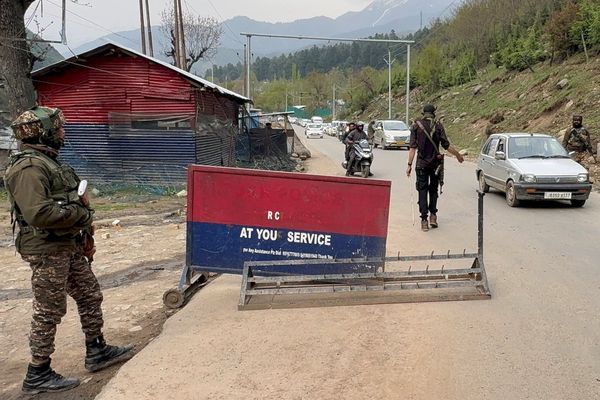Reasons to worry about a recession are piling up: the Federal Reserve's inflation fight, a slowing housing market, warnings from retailers and venture capitalists and a smattering of layoff announcements. But one part of the labor market is sending a decidedly different signal. Goods-producing employment, which includes industries like manufacturing, construction and oil and gas extraction — is accelerating rather than slowing as it has in previous recessions.
There are a couple of ways this could play out. If the industrial part of the economy powers ahead while other segments pull back, it could simply represent a shift in activity as the Fed brings inflation under control. The second possibility is that the industrial strength forces the Fed to keep raising interest rates to the point that the economy veers into a recession, mild or otherwise.
Both scenarios are bad news for consumers.
Goods-producing industries account for 21 million U.S. workers, and include most of the cyclical businesses that suffer in downturns. These companies shed three million jobs in the early 2000s, and after a modest recovery shed another five million during the 2008 recession. The segment has lost at least a million jobs in every single recession going back to World War II.
So it's noteworthy that over the past 12 months goods producers have added almost 800,000 jobs, which prior to the pandemic hadn't happened since the early 1980's.
What's even more significant is that the level of job openings in those industries sits at a record high. Other industries have seen labor demand moderate as staffing levels have normalized, but not these companies.
How can we square this with all the negative economic headlines we're seeing this year? There are three main areas slowing down right now: the retail sector as consumers shift their spending from goods to services; speculative areas of the technology sector as valuations have fallen; and housing, as soaring home values and rising mortgage rates have challenged affordability. The first two have very little to do with the industrial economy. Housing is more a question of price because demand still outpaces supply and production of new housing remains strong.
Meanwhile, in the goods-producing economy there’s a need for more oil and refined oil products as prices soar. Automakers are trying to catch up with demand as they work through a shortage of semiconductor chips, and the industry is embarking on a once-in-a-lifetime transition from gasoline-powered to electric vehicles.
Companies are investing in automation as they wrestle with labor shortages. Governments at all levels are finally investing in infrastructure. There is the aforementioned housing shortage. Supply-chain uncertainty is leading some companies to bring overseas production back to North America. And defense companies will be busy as the U.S. and European allies spend money on military supplies to assist Ukraine in its war against Russia.
The amount of interest rate increases already priced into markets — a federal funds rate of around 3% by early 2023 — hasn't yet slowed down these areas of the economy at all. That should give economists and investors confidence that the odds of going into recession in 2022 are low.
But most people just care about what it costs to buy a car, a house or to fill up their gas tank — and there is less good news on this front. As companies and governments invest in infrastructure, future production, automation and defense spending, they are bidding up resources that consumers had grown accustomed to being cheap. It’s unlikely that anything that’s resource- or labor-intensive will return to being "cheap" as long as this boom in the industrial economy continues.
And unfortunately, that’s the good scenario. Here’s the bad one: Let’s say core inflation cools from its 5.3% peak in February to 3.5% by early next year. That would be an improvement, but not enough for the Fed’s liking, which might mean another round of interest rate increases beyond what’s currently priced into markets.
That could finally be enough to curtail the industrial boom. And it would also probably damage the economy enough to bring about the kinds of sweeping job losses consistent with past recessions.
The boom in manufacturing and construction is anything but speculative — arguably, all of it represents investments that are needed. But if the best scenario is to maintain that boom while avoiding a recession, consumers need to be prepared for things to stay expensive.
____
ABOUT THE WRITER
Conor Sen is a Bloomberg Opinion columnist. He is founder of Peachtree Creek Investments and may have a stake in the areas he writes about.
This column does not necessarily reflect the opinion of the editorial board or Bloomberg LP and its owners.







